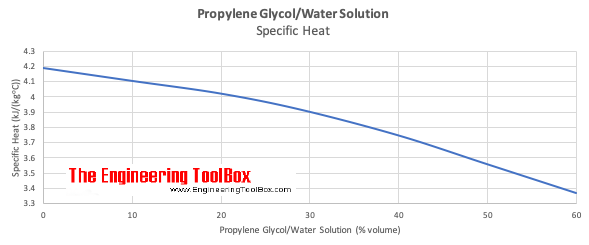fljim
Active Member
So I have tried on multiple forums to get any answer that would corroborate SS Brewtech's engineer. NOTHING. I have been homebrewing for almost 20 YEARS and never have I had such a BAD experience.
Here's the setup.
SS Brewtech 1BBL UNJACKETED Unitank with neoprene cover
BrewBuilt™ IceMaster Max 2 Glycol Chiller 1700btu 4.5 Gal. Tank - 30% glycol solution
1/2" Silicon lines running from Chiller to Unitank coils (10')
I put 30 gallons of water in the unitank.
I set the glycol chiller to -2C (coils NEVER freeze over)
I set the glycol pump to 33F (lines that run to/from unitank coil)
With this setup, I cannot get the liquid in the tank to drop below 41-42F. I have tried this when the ambient temperature was 79F and 65F. No difference. Still sweats like crazy.
Here are the pump times for 1 GALLON:
1) The volume as listed, is at 1 minute 18 seconds.
2) Taking the coil out and connecting it directly to the chiller put it at 1 minute 8 seconds.
3) Disconnecting everything and putting a lineout from the chiller into my gallon pitcher, put the time at 24 seconds.
Now I have everything the SS Brewtech support has asked me to but nothing is chilling this thing down below 41. Now, ***because the entire process of "solving the problem" has taken so long, I am stuck with this thing.***
MY THEORY is that living here in Florida REQUIRES at jacketed Unitank. SS Brewtech disagrees, but cannot manage to solve this little dilemma, nor can they prove me wrong. I believe that I am fighting physics and that unless I have a larger coil, there cannot be enough glycol passing through to cool the liquid fast enough before it draws heat from the environment and wicks away.
FAIR WARNING: If you buy from SS Brewtech, and you have problems, GOOD LUCK getting any real support. I have seen other people posting warnings about this company but, like an idiot, I didn't do my research on them until I started finding a serious lack of support.
BAD COMPANY, DO NOT BUY. There are too many other good brewing companies out there to deal with a company that couldn't give a rats rear about you once they have your money.
Here's the setup.
SS Brewtech 1BBL UNJACKETED Unitank with neoprene cover
BrewBuilt™ IceMaster Max 2 Glycol Chiller 1700btu 4.5 Gal. Tank - 30% glycol solution
1/2" Silicon lines running from Chiller to Unitank coils (10')
I put 30 gallons of water in the unitank.
I set the glycol chiller to -2C (coils NEVER freeze over)
I set the glycol pump to 33F (lines that run to/from unitank coil)
With this setup, I cannot get the liquid in the tank to drop below 41-42F. I have tried this when the ambient temperature was 79F and 65F. No difference. Still sweats like crazy.
Here are the pump times for 1 GALLON:
1) The volume as listed, is at 1 minute 18 seconds.
2) Taking the coil out and connecting it directly to the chiller put it at 1 minute 8 seconds.
3) Disconnecting everything and putting a lineout from the chiller into my gallon pitcher, put the time at 24 seconds.
Now I have everything the SS Brewtech support has asked me to but nothing is chilling this thing down below 41. Now, ***because the entire process of "solving the problem" has taken so long, I am stuck with this thing.***
MY THEORY is that living here in Florida REQUIRES at jacketed Unitank. SS Brewtech disagrees, but cannot manage to solve this little dilemma, nor can they prove me wrong. I believe that I am fighting physics and that unless I have a larger coil, there cannot be enough glycol passing through to cool the liquid fast enough before it draws heat from the environment and wicks away.
FAIR WARNING: If you buy from SS Brewtech, and you have problems, GOOD LUCK getting any real support. I have seen other people posting warnings about this company but, like an idiot, I didn't do my research on them until I started finding a serious lack of support.
BAD COMPANY, DO NOT BUY. There are too many other good brewing companies out there to deal with a company that couldn't give a rats rear about you once they have your money.































![Craft A Brew - Safale S-04 Dry Yeast - Fermentis - English Ale Dry Yeast - For English and American Ales and Hard Apple Ciders - Ingredients for Home Brewing - Beer Making Supplies - [1 Pack]](https://m.media-amazon.com/images/I/41fVGNh6JfL._SL500_.jpg)



























